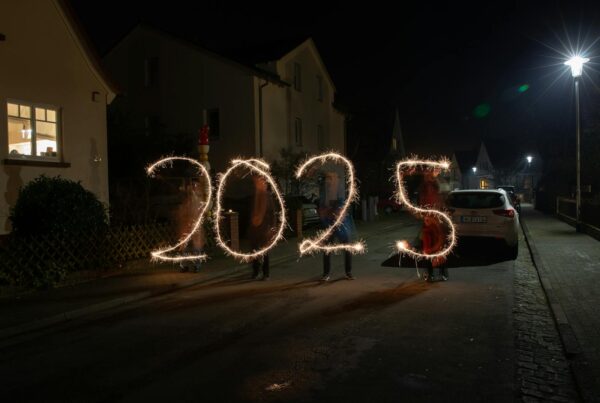Introduction
The St Patrick’s Day bank holiday, observed on March 17th annually, is a holiday that has grown in cultural importance and global reach over the years. It’s an occasion that has transitioned from a religious commemoration to an international festival celebrating Irish culture and heritage with parades, dancing, and even the ubiquitous drinking of green-tinted beverages. Despite its distinctly Irish origins, St Patrick’s Day is now celebrated in corners of the world far removed from the Emerald Isle. But how did this come to be, and when did St Patrick’s Day become a bank holiday?
Table of Contents
Is St Patrick’s Day a Bank Holiday?
St. Patrick’s Day, celebrated on March 17, is a public holiday in Ireland, including both the Republic of Ireland and Northern Ireland, where it is marked by widespread festivities, parades, and cultural events. Here, businesses, banks, and schools close to allow for full participation in the day’s celebrations.
In contrast, in other parts of the UK, such as England, Scotland, and Wales, and in countries like the United States and Canada, St. Patrick’s Day is not recognised as a bank holiday. Despite the lack of official holiday status, it is celebrated widely, particularly in areas with significant Irish communities. Celebrations include parades and cultural events, but businesses and schools generally remain open.
St Patrick and the Origins of the Holiday
Who was St Patrick?
Saint Patrick, the patron saint of Ireland, was a Christian missionary credited with bringing Christianity to Ireland in the 5th century. Despite being of Roman-British origin, his name is now inextricably linked with Ireland due to his extensive missionary work in the region.
It is worth noting that much of St Patrick’s life is shrouded in mystery and myth. One of the most well-known tales associated with him is the banishment of snakes from Ireland, an event depicted in countless illustrations and narratives. However, it’s widely acknowledged by scholars that this story is allegorical, symbolising the conversion of the Irish people to Christianity and the driving out of pagan beliefs.
The Establishment of the Feast Day
St Patrick’s Day originated as a religious feast day to commemorate the death of St Patrick, believed to be on March 17th, circa 461. In the centuries following St Patrick’s death, his work, character, and mythology were kept alive by the Irish church. By the 7th century, his status as a saint was recognised, and his death anniversary was marked as a feast day, a day of commemoration in the Christian liturgical calendar.
Evolution from Religious Observance to Public Holiday
Transatlantic Influence
In the early years, St Patrick’s Day was largely a religious affair marked with prayer, church services, and modest feasting. However, the nature of the holiday underwent significant transformation with the mass emigration of Irish people to North America, especially during the Great Famine of the 1840s.
In the United States, Irish immigrants banded together, using the day to publicly demonstrate their collective strength and cultural pride. Parades, now a quintessential feature of St Patrick’s Day celebrations, were first initiated by Irish soldiers serving in the British army in New York in 1762 but became more prominent during this time.
Becoming a Bank Holiday
In Ireland itself, St Patrick’s Day was officially made a public holiday in 1903 through the Bank Holiday (Ireland) Act 1903, introduced by James O’Mara, an Irish Member of Parliament. Interestingly, O’Mara later also introduced the law that mandated that pubs should be closed on the 17th of March, an attempt to bring the focus of the day back to its religious roots away from the secular revelry. This law was repealed only in the 1970s.
However, it wasn’t until the mid-20th century that St Patrick’s Day began to resemble the widespread, vibrant celebrations we see today. With the first official St Patrick’s Day parade held in Dublin in 1931, it took until 1995 for the Irish government to begin a campaign to use the holiday as an opportunity to drive tourism and showcase Ireland and Irish culture to the rest of the world.
Global Recognition and Modern Celebrations
Today, St Patrick’s Day has grown into a global phenomenon celebrated by millions of people worldwide, Irish and non-Irish alike. It’s a day awash with green – from clothing and decorative items to rivers and landmarks in various parts of the world – symbolising Irish heritage and the verdant landscape of Ireland.
Despite its broad secular appeal, it’s important to remember that St Patrick’s Day retains its status as a religious holiday in Ireland and other regions, observed by the Catholic Church, the Church of Ireland, Eastern Orthodox Church, and Lutheran Church.
Unique Celebrations
While the holiday’s spirit remains consistent, the actual celebrations vary greatly:
- In Ireland, it’s a day marked with parades, festive attire, music, dancing, and a special allowance for the Lenten restrictions on eating and drinking alcohol.
- In the United States, parades are grand events, often accompanied by elaborate feasts, parties, and wearing of green attire or accessories.
- In Canada, St Patrick’s Day is a public holiday in the province of Newfoundland and Labrador, celebrated with various events, including parades and concerts.
- In Australia, while not a public holiday, the day is marked with festivities that display the strong Irish influence in the country.
- In Britain, particularly in areas with strong Irish connections, like Liverpool and parts of London, large parades and events are organised.
Conclusion
The evolution of St Patrick’s Day from a humble feast day to an internationally recognised bank holiday is a testament to the enduring influence of Irish culture and heritage. As St Patrick’s Day is celebrated by diverse populations worldwide, it underscores the fascinating way in which traditions can transcend their original context and attain a global resonance. It’s a day that, regardless of one’s lineage or nationality, people can share in a sense of community and celebration, proving that everyone can be a little bit Irish on St Patrick’s Day.





